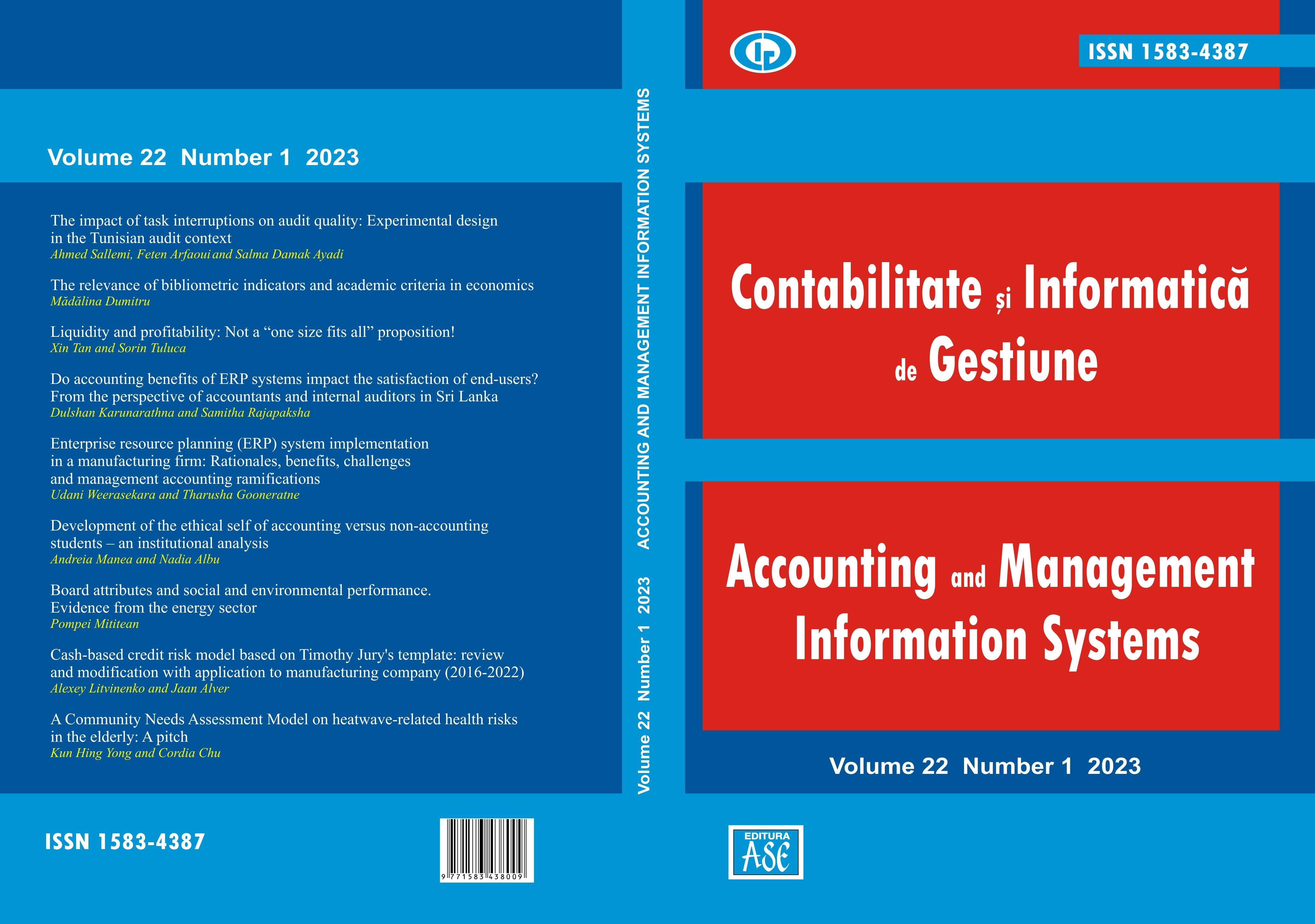Cash-based credit risk model based on Timothy Jury’s template: review and modification with application to manufacturing company (2016-2022)
Cash-based credit risk model based on Timothy Jury’s template: review and modification with application to manufacturing company (2016-2022)
Author(s): Alexey Litvinenko, Jaan AlverSubject(s): Business Economy / Management, Accounting - Business Administration
Published by: EDITURA ASE
Keywords: cash-based analysis; credit risk; liquidity; probability of default;
Summary/Abstract: Timothy Jury’s credit risk analysis provide sufficient visibility of the company’s financial situation and creditworthiness? 2) Can such methodology based on Timothy Jury’s credit risk analysis be a trustworthy indicator of production company bankruptcy and the likelihood of default?Motivation: nowadays financial institutions use an accrual-based credit risk model for the analysis of the creditworthiness of the companies, however, such models are not always trustworthy due to the data manipulations in the accrual financial statements. Since the cash flow financial statement is more reliable for the determination of the probability of default, the authors developed the cash-based credit risk model and applied it to the production company for the analysis of its likelihood of default.Idea: This paper looks at Timothy Jury’s little-known methodology of credit risk analysis and its underlying template, and proposes a version that the authors improved in accordance with the requirements of International Financial Reporting Standards (IFRSs). The authors used improved methodology for the analysis of a manufacturing company to find out the company’s pre-bankruptcy situation and reveal the likelihood of credit risk default.Data: the company analyzed is a publicly listed production company Linas Agro Group with its shared traded at Nasdaq Baltic. The data for the research was taken from the annual reports, managerial reports, and the auditor’s reports issued for seven years 2016–2022.Tools: Timothy Jury’s cash-based analysis template was modified by the authors into the credit risk model.Findings: the results show that the modified cash-based credit risk model provides sufficient visibility of the company’s likelihood of default and specifies the actual source used to cover the debt. The analysis has shown that the production company paid significant dividends with negative cash available to satisfy capital providers.Contribution: the present article contributes to the knowledge base about cash flow and credit risk. The article encourages an academic society to further research the topics related to cash flow and cash flow theory, which is currently less researched than accrual-based theory. The article is also beneficial for business owners, investors, and finance professionals to improve investment decision-making, for bank managers to diminish the number of bad loans and for the auditors to determine the pre-bankruptcy state of the company more precisely using the cash-based credit risk model presented in this article.
Journal: Journal of Accounting and Management Information Systems
- Issue Year: 22/2023
- Issue No: 1
- Page Range: 147-172
- Page Count: 26
- Language: English

